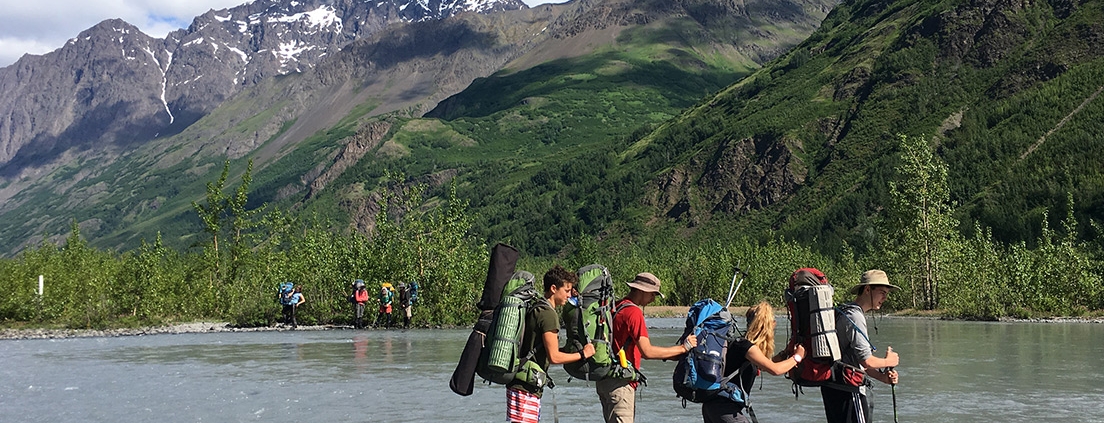What Do College Admissions Officers Really Look For?
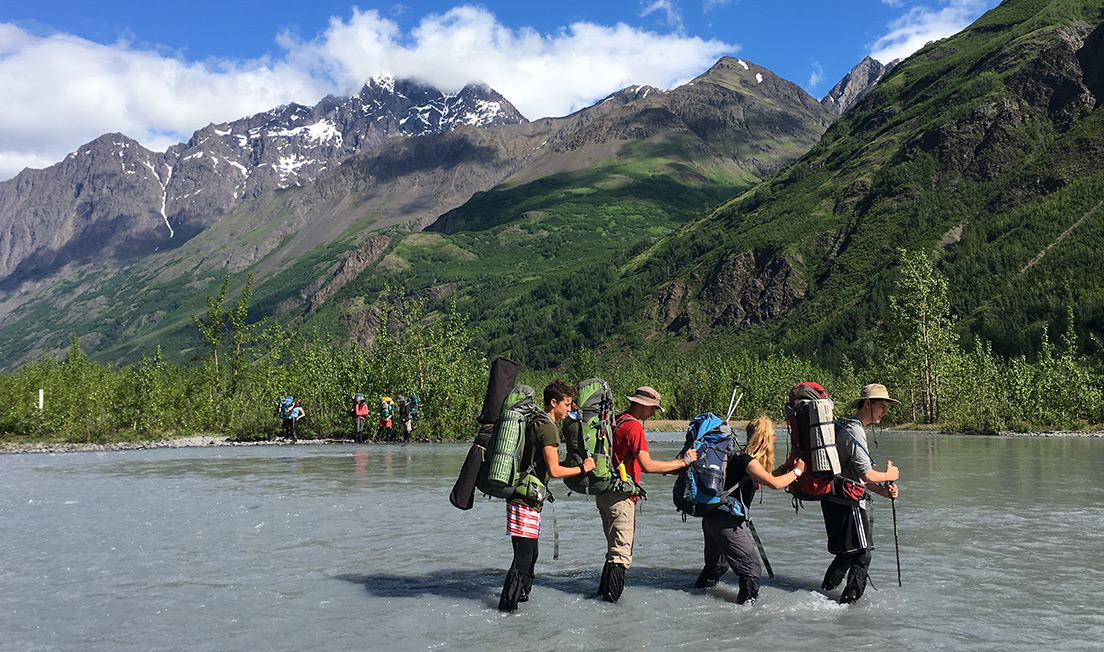
Thomas (far right) and friends crossing the Eagle River in the Chugach Mountains in Alaska in 2018.
College application season is in full swing, and we always enjoy hearing from Adventure Treks graduates, either requesting letters of reference or sharing their college essays. The latter often include a poignant story or two from their Adventure Treks experiences.
Determining a first-choice school out of the 4,000 universities available in the United States can be a pretty random process, but talk to any senior in the fall and you will know that there is undue pressure students feel to get into a “top” college. In the middle of a busy year, the college application process can feel overwhelming: Students must write multiple essays; take AP exams, SATs, and ACTs; and demonstrate that they are both uniquely talented in one thing while being well-rounded in everything else!
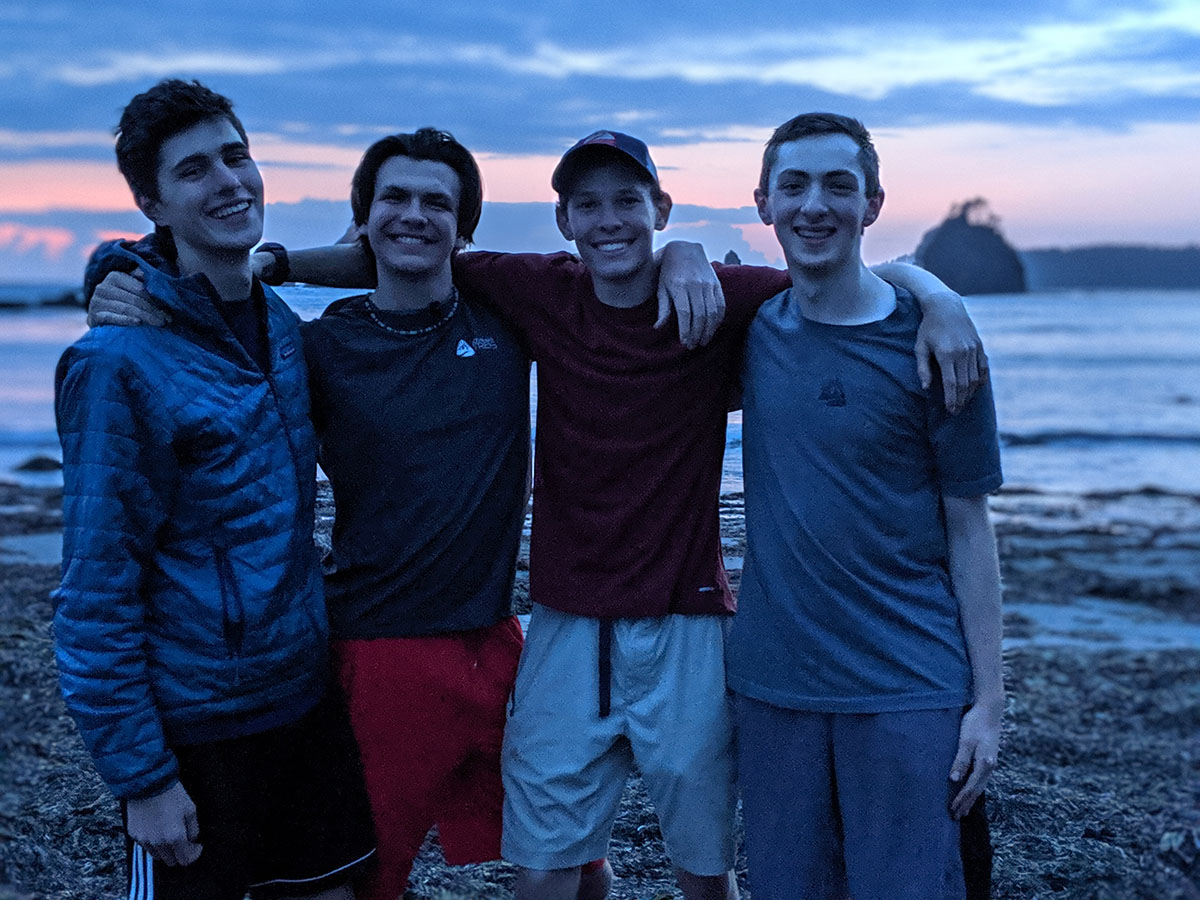
Thomas (far left) and friends leading a backpack on the Olympic Peninsula during Leadership Summit in 2019.
We hear the same story repeated by Adventure Treks parents all over the country: They feel that in order to “get accepted,” they have to pack their school year and summer break with as many different activities as possible to achieve the golden “well-rounded” status. I want to posit that more important than demonstrating a well-rounded student who has traveled the globe or mastered the checklist to build the winning resume is showing an authentic, thoughtful, passionate, independent, and capable teenager.
As research for this blog, I had the opportunity to speak with a high school guidance counselor and the owner of a college admissions advising company about what colleges look for in a prospective undergraduate student. Both were extremely helpful and gave us some behind-the-scenes info, including how Adventure Treks fits into the competitive world of college admissions.
I have a senior in high school. Thomas is a well-rounded young man who has done quite well academically. But as we are all learning, simply having a 4.0 GPA or higher is pretty standard these days. Thomas and I are fresh off the trail from touring five campuses in four days, participating in information sessions. The pace felt like an AT trip!
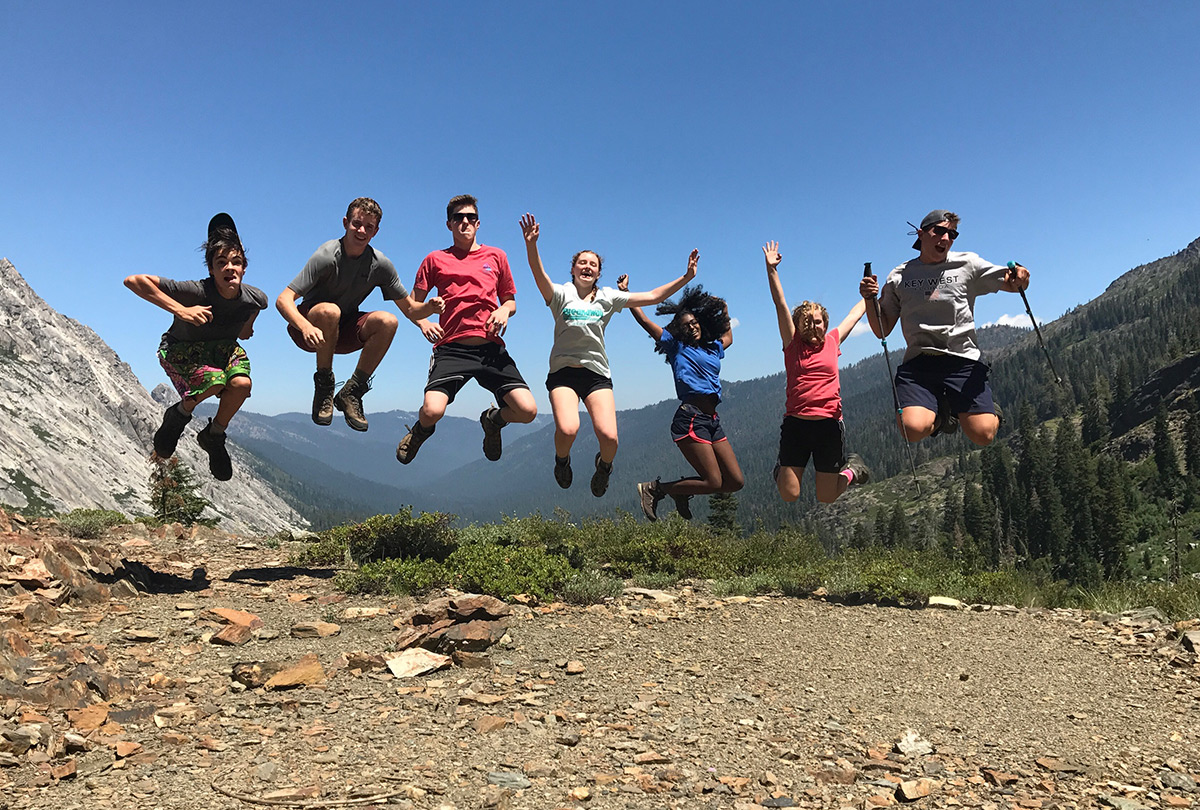
Thomas (toward middle, red shirt) and friends finding joy during a California Challenge backpack in the Shasta Trinity Alps in 2017.
I found one common thread throughout all of our tours: Each institution claims they want a “holistic” student. Their descriptions are similar: They’re looking at the entire student, including but not limited to grades, test scores, affiliations, extracurricular activities, and history of volunteerism. Admissions officers are looking for diversity in race, religion, artistry, athletics… plus students who are the first in their family to attend college, those who excelled in student government, teenagers who’ve held part-time jobs, students in band—you get it. SAT and ACT test scores do matter, but most colleges make it clear that they’ll accept students both above and below their “acceptable ranges.” The guidance counselor and admissions advisor stressed that, far and above, the aggregate of a student’s four years in high school carry much more weight.
The other big takeaway is that each student’s authenticity truly matters. Admissions officers want to see that authenticity jump off the page in the essays—they want students to paint a vibrant picture of who they really are. That’s not very easy for many teenagers, is it?
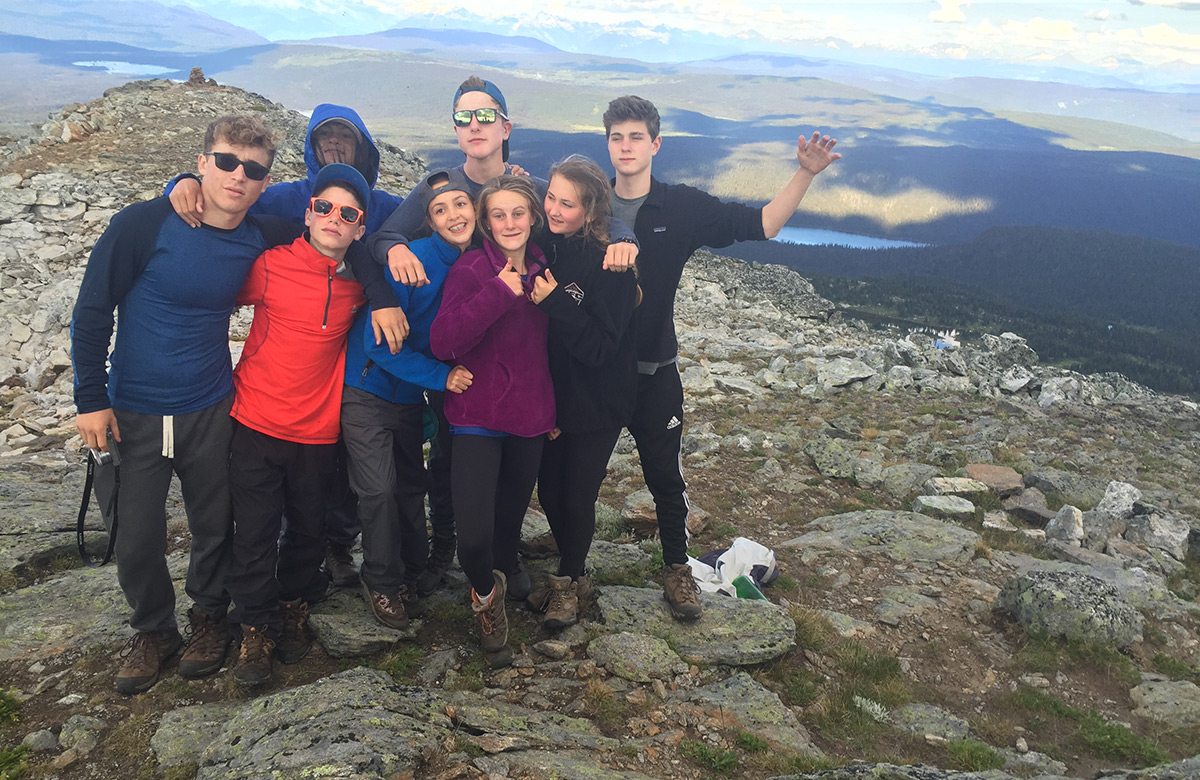
Thomas (far right) and friends celebrating during a summit on a British Columbia backpack in 2016.
Take a step back, and think about your child upon returning home from his or her last Adventure Treks trip. You see an exhausted (and perhaps stinky) child, but someone who is happy, talkative, confident, open, charismatic… someone floating on cloud nine and a kid we’d love to see every single day. Now think of your child after taking the SAT or ACT—how does it compare?
According to guidance counselors, college admissions officers are looking for genuine students with original ideas and thoughts—and not only high-achieving students, but also those who spend significant time doing what they love. If a kid loves animals, they should be volunteering at an animal shelter or zoo; if they love mountain biking, they should be racing on a team, working at a shop, or helping teach others how to ride. If the participation has to be forced or is merely used for padding a resume, it’s not worth doing.
Consistency also pulls a lot of weight with college applications. Working the same part-time job for three years, for example, shows an admissions officer one’s dependability and commitment, unlike bouncing around from activity to activity or job to job, which might come off as unreliable and irresponsible. This consistency truly shines with community service and extracurriculars; volunteering locally throughout middle and/or high school provides a much more meaningful experience for a student than dabbling in different service projects around the country or world.
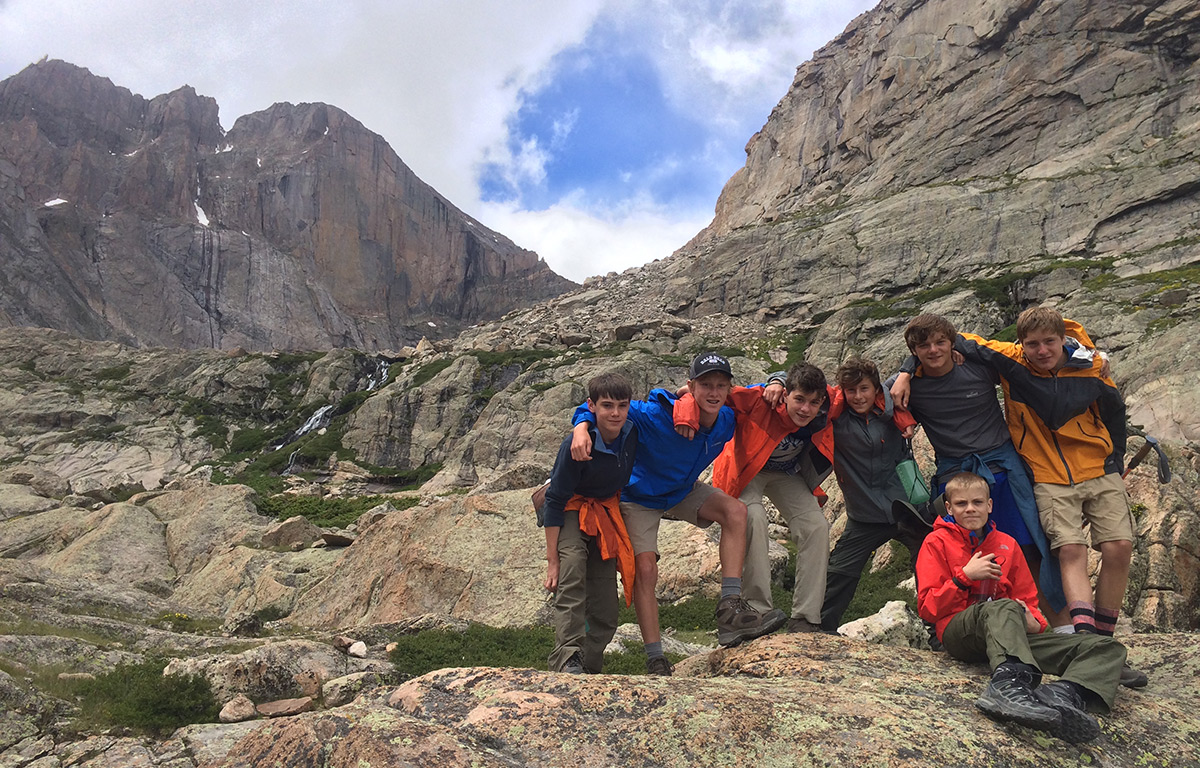
Thomas (third from left) and friends taking in views during a Rocky Mountain National Park summit in 2015.
So, how does Adventure Treks fit into this? Our students have these life-changing experiences, spending two to four weeks working side-by-side as a team supporting each other through highs and lows. (Thomas has told me stories about kids quietly and anonymously taking weight out of other struggling students’ backpacks just to help them out… How many teenagers do you know who care that much?) The moments they experience cannot be planned—they happen organically and authentically as students are given the space to open up and find the best versions of themselves.
Obviously, not every admissions officer will recognize the name Adventure Treks, so the onus is on our kids to share through their essays the impact, insights, feelings, and growth they’ve experienced at Adventure Treks, and how it’s affected them and shaped their outlook on life. I can’t tell you how many students have sent us their college essays, featuring their Mt. Shasta summit, or how they learned to make and value true friendships, or the meaning of volunteerism, or an epiphany they had in nature about whom they want to be as a person. When the material is personal and authentic, the words flow much more easily, and the excitement and passion shines through more clearly.
Thomas has featured Adventure Treks in his essays. His multiple summers show consistency—that he has found a passion and has pursued it. I hope he will be able to articulate his ability to live deeply in a community, his resilience, the strengths he’s found, and everything else he’s gained from his six years of AT trips.

Thomas (center, blue shirt with lei) and friends celebrating their summit of Mt. St. Helens on their very first AT trip in 2014.
Colleges want to accept students who can graduate in four years and are concerned about today’s record high drop-out rate. This is partly because in the digital age, fewer kids are prepared with the independence or life skills needed to thrive away from home. Experience on an extended wilderness trip demonstrates an ability to thrive in difficult and often uncertain situations and a level of independence few kids possess. I have also heard, in this age of “snowplow” parenting, an extended wilderness trip shows that parents have confidence both in their children and in the organizations that work with children. This marks a family as “easy to work with,” a subtle plus in the eyes of an admission officer.
My son took his first trip with Adventure Treks at age 12, and his six adventures culminated this past summer with Leadership Summit at the ripe old age of 17. He departed his final AT community with a wilderness first aid certification; the confidence and skills needed to lead his peers on the trail (through food preparation, risk management analysis, and logistics planning); and, most important, the ability to make and maintain friendships that I truly believe will last him a lifetime. I strongly believe that AT has played a large role in his high school success, and regardless of where he gets accepted and attends, I know his outdoor experiences will help him thrive in college and beyond.

